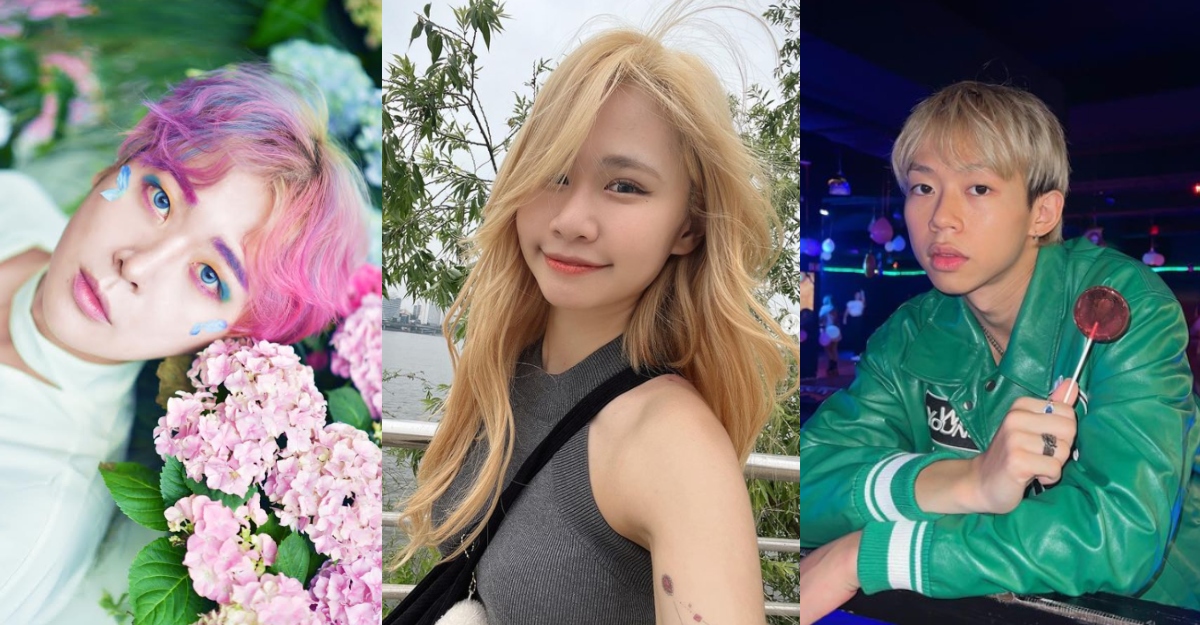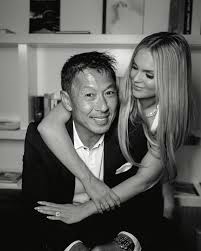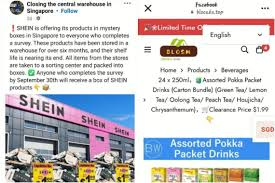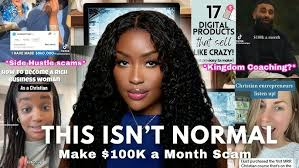How TikTok Shop is Transforming Live-Streaming Commerce in Singapore
The Rise of a Billion-Dollar Industry
TikTok Shop has fundamentally reshaped Singapore’s e-commerce landscape, bringing about a live-streaming revolution that has transformed how brands connect with consumers and how regular individuals can become influential sellers. This analysis examines the key factors driving this transformation and the broader implications for Singapore’s retail ecosystem.
Closed-Loop Innovation: The Game-Changer
TikTok Shop’s primary innovation is creating a closed-loop ecosystem that removes traditional friction points in social commerce:
- Integrated Purchase Journey: Unlike previous platforms where users discovered products on one platform but had to purchase elsewhere (open-loop), TikTok Shop allows discovery, engagement, and purchasing all within a single environment.
- Seamless User Experience: As Leon Koh, TikTok Shop Singapore’s fashion lead, explains, this creates “a more personal and immersive experience that goes beyond traditional e-commerce,” where consumers can interact with sellers in real time while making purchases without leaving the platform.
- Dramatic Growth Metrics: TikTok Shop Singapore’s gross merchandise value (GMV) for live streams increased by 85% by April 2025 compared to the same period in 2024, demonstrating the effectiveness of this model.
Economic Impact and Revenue Generation
The economic impact of TikTok Shop’s live-streaming model is substantial:
- Accelerated Sales Velocity: Brands are experiencing unprecedented sales acceleration. As Shawn Lee of Fine Today Global noted, a successful three-hour live stream can generate what would typically require “three days’ revenue” in traditional retail channels.
- Creator Economics: The top 0.1% of creators in Singapore can earn six-figure monthly incomes, with commission rates ranging from 3-8% for tech products to 10-20% for fashion and beauty, and up to 25% for niche categories like wellness.
- Agency Growth: Marketing agencies like Lucid Social Marketing Communications have pivoted their business models to capitalize on this trend, driving over $1.4 million in sales in a single month (February 2025) and experiencing a six-fold increase in creator partnerships over two years.
Democratization of Influence
Perhaps the most transformative aspect is how TikTok Shop has democratized commercial influence:
- Barriers to Entry Eliminated: Anyone with a smartphone and selling skills can become influential, regardless of prior fame or following. As Shawn Lee observed, “Once you’re in the TikTok environment, you’re no longer a celebrity. Anyone who can sell can be a celebrity.”
- Performance Over Popularity: Success metrics have shifted from traditional follower counts to performance-based metrics like conversion rates, average watch time, click-through rates, and units sold per live session.
- New Career Paths: The article highlights individuals like Fredy Chia (28) and Emily Tan (31, a former bank relationship manager, who have built successful careers as live-stream sellers without traditional celebrity status.
Strategic Brand Adaptation
Established brands are being forced to adapt their strategies:
- Reduced Retail Dependency: Companies like Fine Today Global are using TikTok Shop to reduce reliance on physical retailers, circumventing traditional constraints like retailers’ sales targets and operating hours.
- Brand Image Concerns: Premium and curated brands (particularly Japanese ones) initially hesitated due to brand image concerns but are increasingly recognizing the necessity of adapting to changing media consumption patterns.
- Integrated Marketing: Successful brands are treating TikTok Shop not just as a sales channel but as an integrated marketing vehicle that builds brand awareness through entertainment and engagement.
The Psychology of Purchase
TikTok Shop capitalizes on different consumer psychology compared to traditional e-commerce:
- Impulse Purchasing: Unlike platforms like Shopee, where consumers enter with specific purchase intent, TikTok’s “doomscroll” nature creates opportunities for impulse purchases during content consumption.
- Persuasion-Based Sales: As influencer Cheryl Chin notes, “People go into Shopee knowing they want to buy something, but not everybody goes onto TikTok to buy something… It’s more about whether this person can convince you to buy something.”
- Real-Time Engagement: The interactive nature of live streams—allowing viewers to ask questions and see products demonstrated in real time—creates a higher-trust environment for purchases.
Market Development Strategies
TikTok is actively developing the Singapore market:
- Creator Development: TikTok provides training and matching programs for creators, hosts, brands, and sellers to build the ecosystem.
- Cross-Border Commerce: TikTok has piloted overseas live streams (like the Korea Live Fest campaign) to increase product variety through “daigou” (cross-border personal shopping).
- Platform-Wide Incentives: TikTok offers platform-wide vouchers andsubsidisess discounts to drive adoption among both sellers and buyers.
Strategic Challenges and Future Outlook
While TikTok Shop is transforming Singapore’s e-commerce landscape, several challenges remain:

Market Adaptation Challenges
- Lifestyle Fit: As Leon Koh notes, “people in Singapore are very busy, so they may not watch live streams as often” compared to larger markets where the format has been more successful.
- Learning Curve: Brands like Fine Today experienced initial failures (generating less than $1,000 in a three-hour stream) before finding success with the right creators and strategies.
Future Growth Potential
The industry appears poised for continued expansion:
- Early Stage Market: Industry experts like Jia Hao Tan of Lucid believe the live-selling industry is still in its early stages with significant growth potential.
- Platform Innovation: TikTok continues to innovate with its “discovery commerce” approach, creating a distinct niche in the e-commerce ecosystem.
- Revenue Scale: With TikTok creators collectively generating US$10 million daily through live streaming globally, and social commerce expected to surpass US$1 trillion by 2028, Singapore’s estimated US$560 million market (2024) has substantial room to grow.
Conclusion
TikTok Shop has fundamentally transformed live-streaming commerce in Singapore by creating an integrated ecosystem that removes traditional friction points, democratizes influence, and creates new economic opportunities. While challenges remain in adapting to local market conditions, the dramatic growth metrics and success stories highlighted in the article suggest that this transformation is likely to continue reshaping Singapore’s retail landscape in the coming years.
Analysing TikTok Live Streamers: Ephemeral Fame vs. Enduring Artistic Achievement
The Live Streamers of Singapore’s TikTok Shop Ecosystem
The article profiles several live streamers who have found success in Singapore’s burgeoning TikTok Shop ecosystem. Let’s examine each personality and their approach before considering the fleeting nature of this commercial success compared to enduring artistic achievement.
Fredy Chia (28): The Professional Salesman
Profile & Approach:
- Booked months in advance for major brand anniversaries (IEM’s 15th anniversary)
- Employs theatrical techniques: countdowns, flash deals, singing, yelling, clapping, and impromptu dancing
- Works with brand executives who coordinate uploading shopping links and vouchers
- Demonstrates versatility by travelling internationally (featured in live streams from Japan)
- Has achieved significant commercial success for brands (helping Fine Today convert from generating less than $1,000 to “five-figure revenue” in three hours)
Success Metrics: Able to generate what would typically be “three days’ revenue in three hours” for established brands, suggesting considerable persuasive capabilities and audience trust.
Emily Tan (31): The Career-Pivot Specialist
Profile & Approach:
- Former bank relationship manager who transitioned to live streaming
- Adopts a more personal, advisory approach (correcting viewer “Mimi” about the appropriate wipes for babies)
- Sells practical, everyday items rather than luxury goods
- Operates from a warehouse environment rather than stylized settings
- Represents the growing trend of professionals leaving traditional careers for social commerce
Success Metrics: Not explicitly stated in the article, but her featured status suggests meaningful commercial impact. Her background exemplifies the democratized access to influence that TikTok Shop has enabled.
Cheryl Chin (24): The Cross-Border Influencer
Profile & Approach:
- Recognised as an established influencer beyond just live selling
- Demonstrates international presence (mentioned selling Polene bags from Paris)
- Offers analytical insights about platform psychology rather than just practising the craft
- Understands the distinction that “TikTok is a consumption app”, where the challenge is whether “this person can convince you to buy something”
Success Metrics: Not explicitly quantified, but her inclusion in international campaigns suggests significant reach and effectiveness.
The Ephemeral Nature of TikTok Commerce Fame
Commercial vs. Artistic Value
Unlike Juliette Binoche’s enduring artistic contributions in French cinema, TikTok live streaming success exists within a fundamentally different value framework:
- Utilitarian vs. Aesthetic Purpose
- TikTok live sellers are explicitly valued for their ability to generate sales, and their worth is measured in conversion rates and gross merchandise value.
- An actor like Binoche creates work valued for artistic expression, cultural commentary, and emotional resonance.
- Temporal Nature of Content
- Live streams are inherently ephemeral, designed for immediate consumption and transaction.
- Films like those starring Binoche are created as permanent artistic works, intended for ongoing cultural discourse and appreciation.
- Recognition Mechanisms
- TikTok sellers gain recognition through sales metrics and platform-specific visibility.
- Binoche’s work is recognized through critical acclaim, awards (César Awards, Academy Award), and lasting cultural impact.
The Contrived Elements of TikTok Commerce
Several aspects of TikTok live streaming success appear particularly manufactured:
- Artificial Urgency Tactics
- The “3, 2, 1!” countdown refrain before deals
- Screams of “$1! $1!” to create excitement
- Timed flash deals are designed to trigger immediate purchase decisions
- Platform Dependency
- Success is entirely dependent on TikTok’s algorithms, policies, and continued dominance.
- The article notes that the industry previously “peaked” on Facebook before migrating to TikTok.
- Metric-Driven Performance
- As Lucid’s Tan describes, success is measured through “conversion rates, average watch time, click-through rates and units sold”—quantitative metrics rather than qualitative impact.
- Live streamers must constantly adapt to these metrics rather than developing an authentic artistic voice.
- Retailer-Defined Value
- Brands dictate commission structures (3-25% depending on category)
- A live streamer’s worth is determined by immediate commercial impact rather than cultural contribution

Sustainability Concerns
Several factors suggest the current TikTok Shop phenomenon may be fleeting:
- Market Saturation
- The rapid six-fold increase in creator partnerships mentioned by Lucid suggests a potential oversupply of creators.
- As more sellers enter the space, the economic advantage for any individual diminishes.s
- Platform Vulnerability
- The article implicitly acknowledges platform vulnerability by describing how Facebook Live selling “peaked” before declining.
- TikTok faces ongoing regulatory challenges globally that could impact its business model.
- Economic Concentration
- The article notes only the “top 0.1 per cent of creators” earn six-figure salaries, suggesting extreme economic inequality within the ecosystem.
- This concentration suggests limited long-term viability for most participants.nts
- Cultural Adaptability Challenges
- TikTok Shop’s Leon Koh acknowledges that “people in Singapore are very busy, so they may not watch live streams as often” compared to other markets.
- This cultural friction point may limit long-term growth.
The Juliette Binoche Contrast: Enduring Artistic Achievement
By contrast, Juliette Binoche’s career in French art house cinema represents a fundamentally different type of achievement:
- Artistic Autonomy
- Binoche selects roles based on artistic merit and personal resonance, not algorithm optimisation.
- Her performances are expressions of human truth rather than commercial persuasion.
- Cultural Endurance
- Films like “Three Colours: Blue,” “The English Patient,” and “Certified Copy” remain relevant decades after their release.
- Her work continues to be studied, analyzed, and appreciated as meaningful cultural artefacts.
- Skill Development
- Binoche’s craft has evolved over the decades through deliberate artistic growth.
- TikTok success often relies on immediate, platform-specific techniques rather than transferable artistic skill.s
- Cultural Impact
- Binoche’s performances have influenced cinematic language, acting techniques, and cultural discourse.
- Live selling primarily influences consumption patterns rather than cultural expression.
Conclusion: Different Forms of Value Creation
The comparison between TikTok live sellers and an acclaimed film actor like Juliette Binoche reveals fundamentally different value systems:
- Commercial vs. Cultural Capital
- TikTok live sellers generate immediate commercial capital through sales commissions.
- Binoche has accumulated cultural capital through artistic expression that transcends immediate commercial metrics.
- Fleeting vs. Enduring Impact
- The success of TikTok live sellers appears highly contingent on platform policies, algorithmic favour, and current consumer trends.
- Binoche’s artistic contributions remain relevant regardless of technological platforms or immediate commercial viability.
- Skill Transferability
- The highly platform-specific skills of TikTok live selling may not translate to other contexts if the platform declines.
- Binoche’s acting skills remain valuable across different directors, eras, and even media.
The TikTok Shop phenomenon represents a significant commercial innovation that has created new economic opportunities for individuals like Fredy Chia, Emily Tan, and Cheryl Chin. However, its contrived mechanics, platform dependency, and focus on immediate commercial metrics suggest it may be a fleeting form of success compared to the enduring artistic and cultural contributions of established artists like Juliette Binoche.
While both create value, they operate in fundamentally different domains—one measures success in conversion rates and gross merchandise value, the other in emotional resonance and cultural significance.
The Ephemeral Economics of TikTok Retail: How Transience Breeds Hype and Market Distortion
The Architecture of Impermanence
TikTok Shop’s ephemeral nature creates a commercial environment inherently structured toward hype cycles, exaggeration, and short-term profit maximisation rather than sustainable business practices. Understanding this dynamic requires examining how impermanence is built into every level of the platform’s ecosystem.
Structural Impermanence
Several foundational elements of the TikTok Shop ecosystem are designed around transience:
- Algorithmic Visibility
- Content appears briefly in feeds before disappearing into the vast content ocean.
- Live streams exist only in their moment, leaving no permanent record beyond sales figures.
- Visibility is controlled by constantly changing algorithmic parameters
- Time-Limited Promotions
- The prevalence of flash sales (the “3, 2, 1!” countdowns in Fredy Chia’s streams)
- Double-digit sale dates (5.5, 8.8) creating artificial scarcity windows
- Limited-time voucher, platform-subsidized discounts
- Platform History
- The article explicitly notes how live selling previously “peaked on the platform shortly after” taking off on Facebook.
- The platform itself operates with awareness of its own potential impermanence.
The Hype Economy
This architecture of impermanence generates strong economic incentives for hype, exaggeration, and short-term profit-taking:
Exaggerated Product Claims
- No Accountability Horizon
- With no expectation of long-term customer relationships, sellers have minimal incentive to ensure products live up to hyperbolic claims.
- The article describes the experience as being about “whether this person can convince you to buy something”, emphasizing persuasion over product truth.
- Rapid Product Cycling
- The ability to quickly pivot from one product to another if customer satisfaction is low
- No meaningful review infrastructure within the live-stream format that would hold sellers accountable for previous claims
- Emotional Triggering
- The theatrical elements described (singing, yelling, clapping, dancing) create emotional responses that override rational evaluation.
- Flash deals trigger scarcity responses that prevent thorough product consideration.
Manufactured Urgency
- Artificial Time Pressure
- The article describes how “each deal is snapped up in minutes”
- Countdowns and limited slots create panic buying rather than considered purchases
- This urgency is entirely manufactured rather than reflecting genuine product scarcity
- Fear of Missing Out
- Live streaming exploits FOMO psychology, suggesting deals won’t return
- The communal experience of seeing others purchasing creates social proof pressure
- Visibility Anxiety
- Creators know their algorithmic visibility could disappear at any moment
- This creates pressure to maximise immediate revenue rather than build sustainable customer relationships
Short-Termism as Business Strategy
The ephemeral nature of the platform transforms short-term thinking from a business flaw into a rational strategy:
Creator Economic Insecurity
- Uncertain Longevity
- No job security or guaranteed visibility means that maximizing immediate earnings becomes rational.
- The article notes the extreme concentration of earnings (only the “top 0.1 per cent” earn six figures)
- This economic precarity incentivizes aggressive sales tactics over reputation-building.
- Commission Structure Focus
- The variable commission structure (3-25% depending on product category) encourages creators to push higher-commission items regardless of value to consumers.
- Creators are incentivized to oversell products with the highest personal return rather than the best consumer fit.
- Platform Dependency
- Complete reliance on a single platform’s policies and algorithms
- Any creator could lose their livelihood through algorithm changes or platform policy shifts
Brand Short-Termism
- Quick Wins Over Brand Building
- The article highlights how Fine Today initially failed but then achieved “five-figure revenue” in a three-hour stream.m
- This dramatic success story emphasizes immediate sales spikes over sustainable growth.
- Metrics Tunnel Vision
- Success sis measured primarily through immediate gross merchandise value (GMV)
- Long-term metrics like customer lifetime value, repeat purchase rate, or brand sentiment receive little attention.
- Competitive Undercutting
- To “stay competitive, creators can work with brands to offer the lowest prices and vouchers during sales”
- This race-to-the-bottom pricing approach may be unsustainable, but it delivers immediate sales spikes.
Psychological Exploitation
The ephemeral nature enables specific psychological exploitation techniques that would be less effective in more permanent retail contexts:
Impulse Over Deliberation
- Doomscroll Psychology
- The article specifically notes that “the doomscroll and discovery aspect of TikTok encourages impulse shopping”
- Unlike platforms where consumers enter with purchase intent, TikTok captures consumers in a vulnerable, passive consumption state.s
- Reduced Comparison Shopping
- The real-time nature prevents meaningful product or price comparison
- The closed-loop system discourages leaving to verify claims or compare alternatives
- Social Validation
- Real-time viewer comments create social pressure to participate
- The appearance of others purchasing (whether genuine or potentially manipulated) creates her behaviour
The Parasocial Relationship Exploit
- False Intimacy
- The article describes how Emily Tan creates a personal connection by addressing viewers directly (“Mimi, I’ve already told you twice”)
- This simulated relationship builds trust that can be exploited for commercial gain.
- Authenticity Theater
- The “behind-the-scenes” elements (like Fredy Chia’s trip to Japanese laboratories) create an impression of transparency.y
- This manufactured authenticity masks the fundamentally commercial nature of every interaction.
Case Study: The Fast Money Focus
The article provides several examples that reveal how this ephemeral structure prioritizes fast money over sustainable business:
- The “Three Days’ Revenue in Three Hours” Benchmark
- This explicitly celebrates velocity over sustainability
- Success is framed as a compression of regular sales cycles rather than expanding total customer value
- The Creator Trip Model
- Taking creators to international locations for short bursts of intense selling
- Prioritizing novelty and excitement over building deep product knowledge or customer relationships
- Samsung’s $1.4 Million in 10 Days
- The emphasis on concentrated sales bursts rather than sustainable long-term growth
- Success is measured in campaign spikes rather than ongoing customer relationships.
Implications for Market Quality
This structural emphasis on ephemerality creates several market distortions:
- Information Asymmetry
- Sellers have significant information advantages over buyers who must make rapid decisions.
- Limited opportunity for consumers to verify claims or compare alternatives
- Quality Degradation
- Reduced incentives for product quality when the relationship between seller and buyer is fleeting
- The ability to rapidly cycle through products if some perform poorly
- Price Distortion
- “Flash deals” and artificial scarcity create price perception distortions
- Difficult for consumers to establish accurate market value amid time pressure
Conclusion: The Economically Rational Pathology
The ephemeral nature of TikTok retail creates an environment where hype, exaggeration, and short-term profit maximization become economically rational strategies despite their potential harm to consumer welfare and market efficiency. The system does not reward sustainable business practices but instead incentivizes:
- Hyperbolic claims that drive immediate purchases but may not reflect the product’s reality
- Artificial urgency that short-circuits consumer deliberation
- Short-term revenue spikes over sustainable customer relationships
- Psychological manipulation leveraging impulse, FOMO, and parasocial dynamics
This is not merely a matter of individual seller ethics but a structural consequence of how the platform’s ephemeral architecture shapes economic incentives. Until these underlying structures change, the TikTok Shop ecosystem will continue to prioritize “fast money” over sustainable business practices, with all the market distortions that imply.
The Meteoric Rise and Fade of Luxury Lifestyle Influencers in Singapore
Singapore’s Luxury Influencer Phenomenon: Cycles of Fame and Obscurity
Singapore has emerged as a fertile ground for luxury lifestyle influencers, with its concentrated wealth, aspirational consumer culture, and sophisticated digital infrastructure. While the article doesn’t explicitly profile luxury lifestyle influencers, we can analyse this phenomenon by examining the structural factors that drive both meteoric rises and inevitable fades in this specialised niche.
The Ascent: Anatomy of Meteoric Rises
The Kane Lim Trajectory
Perhaps the most internationally recognized example of Singapore’s luxury influencer ascent is Kane Lim. He parlayed his family wealth and luxury collection into Instagram fame before achieving mainstream recognition on Netflix’s “Bling Empire.” His rise exemplifies several common patterns:
- Conspicuous Consumption as Content
- Initial attention through displays of luxury goods (particularly Hermès collections)
- Using exclusive access to limited-edition items as an audience draw
- Creating “unboxing” content that satisfies vicarious consumption needs
- Platform-Specific Timing
- Early adoption of Instagram when luxury content was relatively scarce
- Successfully transitioning to reality television as the influencer market saturated
- Using each platform at optimal moments in their growth cycles
- Cultural Bridging
- Leveraging Singaporean identity while appealing to Western luxury audiences
- Creating content accessible to both Asian and Western viewers
- Embodying a specific vision of “Asian wealth” that resonated with global audiences
The Jamie Chua Model
Another notable case is Jamie Chua, whose rise as a luxury influencer came after her high-profile divorce settlement. Her trajectory demonstrates:
- Narrative Transformation
- Converting personal life circumstances into the content narrative
- Transforming from “Indonesian tycoon’s ex-wife” to independent luxury personality
- Using personal story as a differentiator in a crowded luxury space
- Collection Specialization
- Became known for specific luxury niches (particularly her extensive Hermès collection)
- Creating content around the curation process rather than mere acquisition
- Developing an expertise identity rather than just wealth display
- Multi-Platform Expansion
- Beginning with traditional media coverage of her divorce
- Transitioning to Instagram as the primary platform
- Expanding to YouTube for more in-depth collection showcases
The Rapid Brand Integration Pattern
More recent luxury influencers have achieved faster rises through direct brand partnerships:
- Fast-Tracked Legitimization
- Securing early luxury brand ambassadorships that create instant credibility
- Being featured in brand campaigns before establishing large organic audiences
- Leveraging brand partnerships to grow personal platforms
- Event Circuit Visibility
- Strategic appearances at Singapore’s luxury events calendar
- Creating content around the Formula 1 Singapore Grand Prix, fashion weeks, and high-profile galas
- Using event access to demonstrate insider status
- Media Cross-Promotion
- Appearing in Singapore’s luxury publications (Tatler, Prestige)
- Converting traditional media exposure into social media follows
- Creating content loops between platforms and media types
The Decline: Patterns of Inevitable Fade
The Relevance Half-Life
A defining feature of Singapore’s luxury influencer ecosystem is the accelerating half-life of relevance:
- Audience Saturation
- Singapore’s limited geographic size creates rapid market saturation
- Audiences quickly become overfamiliar with particular influencers’ aesthetics
- The exact luxury locations, products, and experiences become visually repetitive
- Diminishing Novelty Returns
- Initial luxury displays generate strong audience reactions
- Each subsequent post produces diminishing engagement
- Content must become increasingly extreme or exclusive to maintain interest
- Platform Algorithm Abandonment
- As engagement metrics decline, platform algorithms deprioritize content
- Reduced visibility creates a downward spiral of relevance
- Attempts to game algorithms often accelerate decline
The Authenticity Paradox
Many luxury influencers experience a fade due to authenticity challenges:
- Transparency Expectations
- Initial audience trust based on perceived authentic luxury lifestyle
- Growing scepticism about gifted items vs. genuine preferences
- Audiences are increasingly distinguishing between owned and borrowed luxury
- Sponsorship Saturation
- Early sponsored content is perceived as exclusive brand alignment
- Growing sponsored portfolio creates perception of mercenary motivation
- Contradiction between exclusivity messaging and widespread commercial partnerships
- Lifestyle Sustainability Questions
- Initial assumptions about sustainable wealth supporting lifestyle
- Growing audience sophistication about influencer economics
- Scrutiny of the financial sustainability of displayed consumption
The Generational Shift
Many established luxury influencers face a fade through demographic changes:
- Platform Migration
- Core audiences moving from Instagram to TikTok and newer platforms
- Difficulty adapting content formats to shorter, more dynamic requirements
- Younger audiences are rejecting aesthetic templates established on prior platforms
- Value Evolution
- Shifting from conspicuous consumption to conscious consumption
- Growing emphasis on sustainability contradicts traditional luxury messaging
- Younger audiences seeking purpose-driven luxury narratives
- Cultural Relevance Gaps
- Disconnect from emerging cultural references and aesthetics
- Inability to authenticate participation in new luxury trends
- Growing perception of representing “outdated” luxury values
Case Studies in Rise and Fade
The Sponsorship Dependency Collapse
Several unnamed Singapore luxury influencers experienced dramatic fades during economic downturns:
- The Hollow Facade
- Luxury lifestyle maintained through brand partnerships rather than personal wealth
- When economic conditions forced marketing budget cuts, the facade collapsed.
- Inability to sustain content quality without sponsored products
- The Disclosure Recalibration
- Growing regulatory pressure for sponsorship disclosure
- Audience disillusionment upon discovering content was primarily sponsored
- Loss of perceived authenticity leading to rapid follower decline
- The Aspiration Inversion
- During economic downturns, ostentatious luxury content becomes socially unacceptable.
- Failure to pivot to more sensitive content formats
- Audience rejection of tone-deaf luxury displays during widespread financial stress
The One-Dimensional Persona Problem
Luxury influencers with limited identity beyond consumption face particular vulnerability:
- The Unboxing Dependency
- Centred exclusively around product acquisition
- Audience boredom with repetitive format despite product variety
- Inability to generate interest beyond material consumption
- The Relationship Reveal
- Personal life developments contradict a carefully crafted image
- Relationship breakups or family conflicts reveal different realities
- Loss of audience trust when a curated persona proves misleading
- The Health Reality Check
- Lifestyle unsustainability manifests in health consequences
- Audience witnessing the human costs of maintaining appearance
- Growing disconnect between promoted lifestyle and visible well-being
The TikTok Shop Disruption
The article’s focus on TikTok Shop reveals how this platform is reshaping the luxury influencer ecosystem: democratisation. DemocratizationnDemocratization
- Democratisation of Luxury Access
- Traditional luxury influencers relied on exclusive access
- TikTok Shop creates alternative pathways to luxury products
- Diminishing value of “access” as a differentiator
- Performance Over Aesthetics
- Established luxury influencers optimized for visual aesthetics
- TikTok rewards selling performance over static visual appeal
- Traditional influencers are struggling to adapt to sales-focused metrics
- Pivot or Perish Reality
- Established Instagram luxury influencers are facing a relevance crisis
- Many are attempting to transition to TikTok with mixed results
- Those unable to adapt to the live selling format are experiencing accelerated fade
The Sustainability Question
The luxury influencer life cycle in Singapore faces fundamental sustainability challenges:
- Economic Vulnerability
- Dependency on continued luxury spending during economic fluctuations
- Exposure to luxury market contractions
- Limited ability to pivot to mass-market alternatives without identity contradiction
- Platform Dependency Risks
- Careers built on platform-specific mechanics are susceptible to policy changes.
- Vulnerability to algorithm updates that deprioritize luxury content
- Difficulty transferring the audience across platform migrations
- Personal Sustainability
- Psychological toll of maintaining a perfected image
- Financial pressure of sustaining luxury acquisitions
- Work-life boundaries eroded by constant content demands
Conclusion: The Accelerating Cycle
Singapore’s luxury influencer ecosystem demonstrates an accelerating cycle of rise and fade, with each iteration compressing the timeframe further:
- Shortened Fame Windows
- Earlier influencers enjoyed years of prominence
- Newer entrants may experience complete rise-and-fade cycles in months
- Platform acceleration is driving faster burnout rates
- Adaptation Imperatives
- Successful influencers are evolving from pure luxury display to specialized niches.
- Transition from passive showcase to active selling (as seen in TikTok Shop)
- Pivot to expertise-based content rather than pure consumption
- The Reinvention Requirement
- Long-term survival is dependent on constant reinvention
- The necessity of developing identity beyond consumption
- Building transferable skills that transcend platform-specific fame
The luxury lifestyle influencer phenomenon in Singapore ultimately reflects broader tensions between aspiration and authenticity, between display and substance. Those who rise meteorically through pure luxury spectacle often fade just as dramatically, while those who evolve beyond mere consumption demonstrate greater resilience in this volatile ecosystem.
Alexis and Dean Indot: Analysing Their Life in the Limelight
The Unexpected Rise to Fame
The Indots represent an interesting case of accidental fame. Unlike many influencers who strategically pursue social media stardom, Dean appears to have stumbled into this role unwittingly. Alexis created their TikTok account and began posting videos of Dean’s financial explanations without his full awareness of what it would mean. This unconventional entry into social media fame creates an authenticity that likely contributes to their appeal.
The Image vs. Reality Dynamic
Several interesting tensions emerge when examining their public persona versus their reality:
Professional Expertise vs. Social Media Simplification Dean has formal credentials (banking SVP role, MBA in strategy and finance) that lend credibility to their content. However, the format requires distilling complex financial concepts into brief, digestible videos. This compression necessarily sacrifices nuance for accessibility.
Reluctant Fame vs. Continued Participation Dean expresses discomfort with recognition and fame (“It’s awkward to me”) and questions his worthiness (“So who am I? To me, it’s ridiculous because I haven’t achieved anything”). Yet he continues participating in the content creation. This reluctance becomes part of his appeal – his slight annoyance and directness come across as refreshingly authentic in a space often filled with overly enthusiastic personalities.
Private People in a Public Space Despite sharing financial wisdom with millions, they maintain strong boundaries around their personal lives. As Dean states, “I don’t understand people sharing their personal stuff.” This selective sharing creates an interesting paradox—they’re household names to millions while deliberately keeping their actual households private.
Controversies and Tensions
While the article doesn’t mention specific controversies, several potential tensions exist in their position:
- Financial Advice Without Accountability: Like many influencers, they provide financial information without the regulatory oversight that typically accompanies financial advisors. Their most popular video advises against using debit cards, advice that might not be appropriate for everyone’s situation.
- Cultural and Age Gap Dynamics: The 26-year age difference and cross-cultural nature of their relationship (Dean is 53 with Malaysian-Singaporean heritage; Alexis is 27 and presumably American) likely attracts curiosity and potentially judgment, which might explain why they avoid discussing their personal relationship.
- Potential Conflict of Interest: Dean works for a commercial bank while giving financial advice online. This creates potential tensions between his professional obligations and his public commentary, especially on sensitive topics like banking crises or tariff policies.
- Simplified Economics vs. Complex Reality: Their format necessarily simplifies complex economic issues. Their viral tariff video (10 million views) provides digestible explanations, but economic policies like tariffs have complex, multi-layered impacts that can’t be fully addressed in short videos.
The Indots represent a fascinating case study in modern fame – expertise-based content creators who maintain strict boundaries between their public and private lives, creating an image of accessibility while preserving their personal reality.
The Hyperreality of Influencer Life: The Alexis and Dean Indot Case Study
The Indots’ experience reveals several fascinating dimensions of hyperreality in influencer culture—where the representation of reality becomes more significant than reality itself.
Constructing Financial Authority in the Digital Realm
Dean’s expertise exists in two distinct realms: his actual professional career as a banking SVP and his digital persona as a financial explainer. The latter has arguably become more “real” to millions of viewers than his actual career achievements. His digital financial authority has transcended his professional one—he’s recognized in public in multiple countries not for his banking work but for his TikTok presence. This creates a hyperreal version of financial expertise where perceived authority in the digital space outweighs traditional credentials.
The Paradox of Authentic Performance
The article notes that viewers enjoy Dean’s “air of faint annoyance” and his delivery style that resembles “a frustrated parent.” These characteristics have become part of the Indots’ brand. What began as Dean’s genuine reactions has likely evolved into a partially performed version of those same reactions—an authentic inauthenticity. This creates a simulation of spontaneity within what has become a calculated content framework.
Comments like “Love this man’s energy” and “Please continue to explain as a frustrated parent might” encourage Dean to maintain or amplify these traits, creating a feedback loop where viewers shape the performance they want to see. Dean’s genuine personality becomes a hyperreal version of itself.
The Simulation of Intimacy
The Indots have created a peculiar dynamic where they’re invited into viewers’ private moments (through their phones) to discuss financial topics, creating a one-sided sense of familiarity. Viewers feeling comfortable enough to ask personal questions about their relationship demonstrates how the simulation of intimacy in social media creates a false sense of closeness.
This hyperrealistic relationship explains why strangers approach them in public. These viewers experience a parasocial relationship where they feel they “know” the Indots, while the Indots experience these interactions as “awkward” encounters with strangers.
Value Creation in the Attention Economy
Their position in the hyperreal economy is exciting. Dean questions his worthiness of attention (“So who am I?”), comparing himself to billionaire hedge fund managers who’ve “done things that are really significant.” Yet in the attention economy, their content potentially has a more actual impact on everyday people’s financial decisions than those hedge fund managers’.
Their most-viewed video (14.4 million views) advising against using debit cards may have influenced more individual financial decisions than many formal financial advisors will in their entire careers. This creates a hyperreal inversion where the simulation (TikTok financial advice) potentially has more real-world impact than traditional financial advisory channels.
The Production of Financial Reality
Perhaps most significantly, their commentary on issues like the US tariff regime demonstrates how influencers can shape public understanding of economic realities. When Dean predicts the tariffs “could potentially push the US into a recession,” he’s not just reporting on economic conditions—he’s participating in the construction of how millions of viewers understand and respond to those conditions.
In this way, financial influencers don’t just explain economic reality; they help produce it through their framing and explanations, creating a hyperreal economic discourse that exists partially detached from yet influencing actual economic behavior.

The Indots embody a distinctly modern phenomenon in which financial expertise, personal authenticity, and economic reality become mediated through digital platforms. These platforms create new forms of authority and influence that operate in a hyperreal space between traditional expertise and entertainment.
Chin Tung Sheng, a 26-year-old influencer with over 334,000 Instagram followers, was sentenced to 32 months and one week in jail on March 19, 2025. He had pleaded guilty on March 7 to seven charges, including cheating, theft, and forgery for offences committed between April 2020 and December 2023.

The judge called him a “prolific fraudster” who committed multiple similar offences over a substantial period. His crimes included:
- Creating 26 separate emails and 27 mobile numbers to further his schemes
- Forging documents, including bank statements, business accounts, and even a letter from the Prime Minister’s Office
- Cheating a food delivery rider of $63 by forging a PayNow receipt
- Breaking into a Sentosa bungalow and stealing approximately $200,000 worth of designer items
- Creating multiple membership accounts to submit forged payment receipts to Ion Orchard, exchanging the points for shopping vouchers worth over $76,900
- Deceiving a hotel by using a doctored photo of a PayNow transaction to avoid paying over $13,200

- Forging documents to convince potential business partners he had government connections and financial backing, including doctoring bank accounts to show balances of $1.8 billion and $16.9 million
The judge noted that Chin had committed some offences while breaching a 24-month conditional warning imposed in January 2021 and only stopped offending after being caught. The article also mentions experts’ observations about how social media can make crime seem aspirational and contribute to a “flex” culture where people flaunt luxurious lifestyles.

Preventing Influencer Scams: A Comprehensive Approach
The case of Chin Tung Sheng demonstrates how social media influence can be weaponized for fraud. Preventing influencer scams requires understanding the psychology behind them and implementing safeguards at multiple levels. Let me walk you through a comprehensive approach to prevention.
Understanding the Psychology

Influencer scams exploit several psychological vulnerabilities. First is the halo effect—we tend to transfer positive feelings about someone’s appearance or lifestyle to assumptions about their character and trustworthiness. Second is social proof—seeing an influencer with a large following makes us believe they must be legitimate. Third is aspiration—many people desire the lifestyle they see portrayed and may lower their guard when offered a chance to access it.
For Consumers and Followers

Digital Literacy Education
Developing critical evaluation skills is essential. When following influencers, ask yourself: Does their lifestyle seem sustainable based on their disclosed income sources? Are they selling products or experiences that seem too good to be true? Do they request unusual payment methods or rush decisions?

Verification Practices
Before engaging financially with an influencer:
- Check for blue verification badges on their accounts
- Look for a consistent posting history and authentic engagement
- Research them across multiple platforms and search engines
- Look for independent reviews of any products or services they promote
- Check if their business entities are properly registered
Transaction Safety
Always use protected payment methods that offer dispute resolution. Never send money via wire transfers, gift cards, or cryptocurrency to influencers you don’t personally know. For significant purchases, insist on contracts and formal receipts—as we saw with Chin, forged payment receipts were a common tactic.
For Platforms and Businesses
Enhanced Authentication
Platforms should implement more robust verification processes for high-follower accounts, especially those engaged in commerce. This might include:
- Identity verification through government ID
- Address verification
- Business registration confirmation
- Regular authentication checks
Transaction Monitoring
Businesses should implement real-time transaction verification systems. In the case of Ion Orchard, having a system that independently confirmed payments rather than accepting screenshots would have prevented the voucher fraud.
Reporting Mechanisms
Create accessible, responsive channels for users to report suspicious influencer behavior, with trained staff to investigate claims quickly.
For Regulatory Bodies
Legal Frameworks
Governments should develop clear regulations specifically addressing digital fraud conducted through social media platforms, with appropriate penalties that reflect the breach of public trust.
International Cooperation
Since influencer fraud can cross borders, international law enforcement coordination is essential to track digital criminals.

Educational Campaigns
Public service announcements about the reality behind influencer culture can help demystify the lifestyle and make people more aware of potential scams.
For the Influencer Industry
Self-Regulation
The influencer industry would benefit from developing standards of transparency and ethical practices. Industry associations could create certification programs that validate influencers’ business practices.

Transparency Requirements
Influencers should be encouraged or required to disclose income sources clearly and maintain transparency about partnerships, sponsorships, and business relationships.
Warning Signs to Watch For
The Chin Tung Sheng case reveals several red flags that consumers should be alert to:
- Extreme displays of wealth without transparent income sources
- Claims of exclusive government or high-profile connections
- Requests for payment through methods that can’t be traced or disputed
- Offers that require immediate action with little time to verify details
- Inconsistencies in their lifestyle or business stories
- A too-perfect presentation without authentic moments of vulnerability
Understanding these dynamics can help create a more fraud-resistant digital ecosystem where influence is built on genuine value rather than deception. The goal isn’t to eliminate trust in online figures but to ensure that trust is earned through consistent, verifiable behaviour rather than carefully curated images.  Secure browsing
Secure browsing

When it comes to staying safe online, using a secure and private browser is crucial. Such a browser can help protect your personal information and keep you safe from cyber threats. One option that offers these features is the Maxthon Browser, which is available for free. It comes with built-in Adblock and anti-tracking software to enhance your browsing privacy.
By utilising Maxthon Browser, users can browse the internet confidently, knowing that their online activities are shielded from prying eyes. The integrated security features alleviate concerns about potential privacy breaches and ensure a safer browsing environment. Furthermore, the browser’s user-friendly interface makes it easy for individuals to customise their privacy settings according to their preferences.
Maxthon Browser not only delivers a seamless browsing experience but also prioritises the privacy and security of its users through its efficient ad-blocking and anti-tracking capabilities. With these protective measures in place, users can enjoy the internet while feeling reassured about their online privacy.
In addition, the desktop version of Maxthon Browser works seamlessly with their VPN, providing an extra layer of security. By using this browser, you can minimise the risk of encountering online threats and enjoy a safer internet experience. With its combination of security features, Maxthon Browser aims to provide users with peace of mind while they browse.
Maxthon Browser is a reliable choice for users who prioritise privacy and security. With its robust encryption measures and extensive privacy settings, it offers a secure browsing experience that gives users peace of mind. The browser’s commitment to protecting user data and preventing unauthorised access sets it apart in the competitive web browser market.
